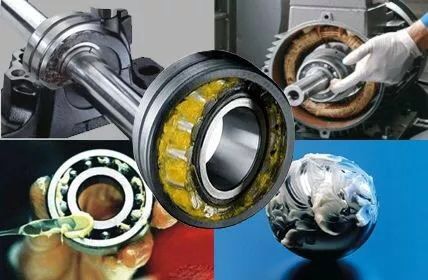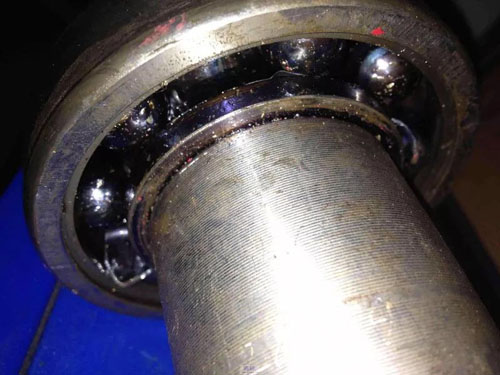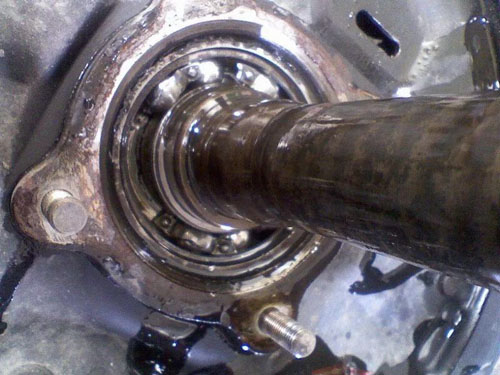Vertical roller mill bearing easy damage prevention method
Vertical roller mill bearing easy damage prevention method
Reasonable lubrication is a key factor in ensuring reliable operation and extended life of rolling bearings. Rolling bearing failures are mostly directly or indirectly related to improper lubrication. This includes the use of unsuitable lubricants, lubricant aging and insufficient lubrication.
Vertical roller mill rolling bearing failure causes: 1 insufficient lubrication, 2 unsuitable lubricant, 3 lubrication aging, 4 material and production failure, 5 bearing selection error, 6 secondary damage, 7 installation failure, 8 liquid impurities, 9 solid impurities.
In addition to the use of lubricating oils (such as mineral oils and synthetic oils) in rolling bearings in some work environments (such as high temperatures and radiation), most bearing manufacturers recommend the use of grease. This article mainly shares the choice of rolling bearing grease.
The characteristics of grease are fundamentally dependent on the following three aspects:
1. Pick the right grease

When selecting the right grease for a vertical roller mill rolling bearing, the following factors usually need to be considered: bearing type, speed, operating temperature and load, as well as installation location, seals, shock and vibration, as well as regulatory and environmental requirements.
1) Base oil type & viscosity
The viscosity of the base oil affects the formation of the lubricating film. Common base oils are mineral oils and synthetic oils. The former is a low-cost base oil because its production process and cost are much simpler and cheaper than synthetic oils. The synthetic oil has a plurality of groups of synthetic hydrocarbons, synthetic esters, polyglycols, silicone oils, fluorinated oils, phosphate esters, polyethers, and the like, each having different characteristics.
2) Thickener
The thickener is an important component of the grease, and the thickener is dispersed in the base oil to form a structural skeleton of the grease, so that the base oil is adsorbed and fixed in the structural skeleton. The water resistance and heat resistance of the grease are mainly determined by the thickener. There are two broad categories of thickeners used in the preparation of greases: soap based thickeners (i.e., fatty acid metal salts) and non-soap thickeners (hydrocarbons, inorganics, and organics).
3) Additives
All greases contain additives. However, some additives improve the performance of the base oil itself (antioxidants, viscosity modifiers, detergents, etc.), while others act on bearings and metal surfaces (such as anti-wear additives, resists, friction reducers).
The thickener and base oil components divide the grease into different types, and the different consistency is indicated by the NLGI consistency number. Consistency represents the solid state of the grease. The original consistency data is placed on the surface of a can of grease with a metal cone. The depth of sinking in 5 seconds at 25 ° C is called the penetration or penetration. The data is 0.1 mm (for example, sinking 25 mm, the record is 250), and the accepted test standards are DIN ISO 2137, ASTM D 217.
Due to the inconvenient use of penetration, the National Grease Association (NLGI) has developed a NLGI Grade system with a high consistency (needle penetration 85-115) of 6 and a low consistency (needle penetration). 445-475) is set to 000. The higher the number, the more "hard" and "thick" the grease is.
2. Factors affecting grease selection
1) Bearing type
Need to distinguish between point contact (ball bearing) and line contact (needle bearing and cylindrical bearing).
For ball bearings, the contact area of the ball movement is relatively small, and the grease with a base oil viscosity of ISO VG 68 to 100 is usually sufficient.
Line contact rolling bearings have higher requirements for grease. Not only because the contact surface requires more grease, but also slip and friction. This is not conducive to the formation of a lubricating film, which is liable to cause abrasion. Greases with higher base oil viscosity (ISO VG 150 to 460 or higher) should be selected. It may also be necessary to add an anti-wear additive with a consistency number of NLGI 2.
2) Speed
The grease should match the speed parameter of the bearing. This depends mainly on the type and proportion of thickeners and base oils. The speed parameter of the grease is not a material parameter, but depends on the type of bearing and the required short run time.

Generally speaking, high-speed or low-start torque rolling bearings require grease with higher speed parameters. Low-speed rolling bearings are recommended for lower speed parameters.
3) Temperature
For good lubrication and long working life, it is generally recommended to select the grease based on the temperature of the bearing in the standard operating range. The operating temperature range of the grease and the stability at high temperatures depend on the type and proportion of the thickener and base oil, the production quality and the production process.
Other factors to consider include high application temperatures, dropping points (temperatures at which grease is heated under specified conditions, reaching a certain level of fluidity, known as dropping points), and low application temperatures.
4) Load
Since the degree of penetration of the grease is related to the load that can be withstood during use, the grease with a small taper (higher consistency) should be used for the load; if it is subjected to heavy load and impact load, the pole should be selected. Grease for pressure additives, such as grease containing molybdenum disulfide.
5) Environmental humidity
If the working environment is damp, water vapor can easily invade the bearing. If the temperature is suddenly cooled and the heat is heated, the water will easily condense. This problem is particularly acute when there are large holes in the bearing or housing.
Water can cause serious damage to grease or bearings, usually caused by aging, hydrolysis, film failure and corrosion. Composite sulfhydryl and composite calcium-based greases provide good water resistance, which has been certified in practice. The anti-corrosion effect of the grease is also affected by the additive.
6) Oscillation, shock and vibration
The oscillating load can have a large effect on the structure of the thickener in the grease. If the mechanical stability of the grease is not high, the lubrication effect will be affected. This results in softening, deoiling, or hardening of the grease, resulting in reduced lubrication. It is therefore recommended to select a grease whose mechanical stability has been tested accordingly.
7) Seal
If hard foreign particles penetrate into the bearing, it will not only cause an increase in noise but also wear. Proper sealing of the bearing prevents this from happening. Grease can enhance the sealing effect by adding a layer of protection to the seal. In this case, a stronger grease type should be chosen.
8) Installation location and adjacent components
Even if the rotating shaft is vertical or inclined, the lubricant must remain at the lubrication point. In addition to proper sealing, choosing a more viscous grease will prevent it from flowing away. If there are multiple lubrication points located close to each other, accidental contact may occur between the greases. It is therefore necessary to pay attention to the compatibility of the greases with each other. However, when possible, the best solution is to use only one grease, which should also be compatible with the sealing material.

9) Regulations and environmental protection
Different industrial sectors should also consider legal and environmental factors when choosing grease. For example, in the food processing industry, the use of grease with associated authorization is specified. For details, refer to the H1 or H2 level certified by a global standard NSF (National Health Foundation).
H1 grade food grade lubricants are lubricants that are used in food production, production, packaging, handling, transportation, storage, etc., with occasional contact with food, but are safe and harmless. This means that the grease must be non-toxic, biodegradable, neutral in smell and taste. Such lubricants typically consist of a composite aluminum based, polyalphaolefin or pharmaceutically acceptable white oil as the base oil.
H2 grade lubricants are lubricants used in food production that are not in contact with food. They can be used for lubrication of equipment and parts or rust-proof membranes. These parts are not in contact with food.